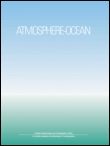
ATMOSPHERE-OCEAN
Scope & Guideline
Uniting Atmospheric Insights and Oceanic Discoveries
Introduction
Aims and Scopes
- Climate Change and Its Impacts:
Research in this area explores the effects of climate change on atmospheric conditions, ocean temperatures, sea-level rise, and extreme weather events, particularly in the Canadian context. - Oceanography and Marine Sciences:
The journal publishes studies related to ocean circulation, biogeochemical processes, and marine ecosystems, including modeling and observational approaches to understand ocean dynamics. - Meteorological and Climatological Studies:
This includes the examination of weather patterns, precipitation trends, and atmospheric phenomena, utilizing both observational and modeling techniques to advance understanding of meteorology. - Hydrology and Water Resources:
Research on hydrological processes, including precipitation, evaporation, and water resource management, particularly in relation to climate variability and change. - Statistical and Computational Methods:
The use of advanced statistical methods and computational models to analyze climate data, assess uncertainties, and improve predictive capabilities in weather and climate forecasting.
Trending and Emerging
- Machine Learning Applications in Climate Science:
The integration of machine learning techniques for analyzing climate data and predicting weather patterns has emerged as a significant trend, showcasing the potential for innovative approaches to complex climate challenges. - Extreme Weather Events and Climate Variability:
Research focusing on the analysis and prediction of extreme weather events, such as heavy precipitation and storms, has increased, highlighting the urgency of understanding their relationship with climate change. - Biogeochemical Cycles in the Ocean:
There is a growing emphasis on understanding biogeochemical processes in marine environments, particularly how they are affected by climate change and human activities, which is crucial for ecosystem management. - Regional Climate Projections:
Studies providing detailed regional climate projections, especially for Canadian contexts, have become more prominent, reflecting the need for localized data to inform policy and adaptation strategies. - Interdisciplinary Approaches:
An increasing trend towards interdisciplinary research that combines oceanography, meteorology, and environmental science to address complex climate issues has been observed, promoting comprehensive understanding and solutions.
Declining or Waning
- Historical Climate Reconstructions:
While historical climate data is still relevant, the frequency of publications focusing solely on reconstructing past climates has decreased, possibly due to a shift towards more immediate climate impacts and predictive modeling. - Traditional Statistical Methods:
There has been a noticeable reduction in the use of traditional statistical methods for climate analysis, as researchers increasingly adopt machine learning and advanced computational techniques for data analysis. - Local Case Studies:
Research focusing specifically on localized climate phenomena without broader implications appears to be waning, as there is a growing emphasis on studies that connect local findings to global climate systems.
Similar Journals

Oceans-Switzerland
Fostering Innovation in Marine ResearchOceans-Switzerland, published by MDPI, is an esteemed open-access journal established in 2020, with a focus on providing a platform for the dissemination of high-quality research in the fields of Environmental Science and Oceanography. Based in the picturesque city of Basel, Switzerland, the journal seeks to foster a deeper understanding of oceanic processes and their implications for the environment through rigorous peer-reviewed articles. With an impact factor reflected in its 2023 Scopus rankings, placing it in the 56th percentile across its categories, Oceans-Switzerland continues to promote interdisciplinary collaboration and innovation, targeting a wide audience of researchers, professionals, and students keen on exploring the complexities of ocean systems. The journal's commitment to open-access policy ensures that groundbreaking research is available to a global audience, reinforcing its crucial role in advancing knowledge and shaping practices within the scientific community.
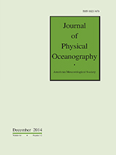
JOURNAL OF PHYSICAL OCEANOGRAPHY
Illuminating Climate-Ocean InteractionsJOURNAL OF PHYSICAL OCEANOGRAPHY, published by the American Meteorological Society, stands at the forefront of the oceanographic research domain, with a distinguished history dating back to 1969. As a crucial resource for researchers, professionals, and students, this journal focuses on the physical aspects of our oceans, facilitating the dissemination of innovative studies that enhance our understanding of ocean dynamics, climate interactions, and marine ecosystems. With an impressive impact factor and a Q1 ranking in Oceanography, it ranks 30th out of 145 journals in the Earth and Planetary Sciences category (Scopus), placing it in the 79th percentile of its field. Its commitment to high-quality, peer-reviewed content ensures that the latest advances in oceanographic science are accessible to a global audience. Although the journal does not currently offer open access options, it remains a vital platform for cutting-edge research that shapes the future of oceanographic science and its applications.
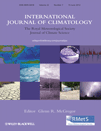
INTERNATIONAL JOURNAL OF CLIMATOLOGY
Advancing climate science for a sustainable future.INTERNATIONAL JOURNAL OF CLIMATOLOGY, published by WILEY, is a leading peer-reviewed journal dedicated to advancing our understanding of climate science. As a prominent periodical within the Q2 category of Atmospheric Science, it encompasses a wide range of topics related to climatology, including climate variability, modeling, and impacts of climate change, making it an essential resource for researchers, professionals, and students in the field. With a history of publication spanning from 1989 to 2024, the journal has established a strong reputation for disseminating high-quality research that informs policy and practice. Though it does not offer Open Access options, its articles are accessible to a broad audience through institutional subscriptions, ensuring that significant findings can reach those who need them most. The INTERNATIONAL JOURNAL OF CLIMATOLOGY plays a crucial role in connecting academia with pressing environmental issues, thus fostering dialogue and innovation in climate research.

ATMOSFERA
Bridging Research and Environmental UnderstandingATMOSFERA is a prestigious journal published by CENTRO CIENCIAS ATMOSFERA UNAM, dedicated to advancing the field of Atmospheric Science. With an ISSN of 0187-6236 and an E-ISSN of 2395-8812, this bilingual journal has been a vital resource for researchers since its inception in 1988. Located in Mexico City, the journal serves as a platform for high-quality original research, reviews, and case studies that explore various atmospheric phenomena, climate issues, and environmental challenges. Although currently categorized in the Q4 quartile of Atmospheric Science, ATMOSFERA aims to contribute to the growing body of knowledge in the field and improve its ranking over the next few years, emphasizing rigorous scientific inquiry and fostering collaboration among scholars. Its accessibility and commitment to open communication make it an essential reference for professionals and students striving to understand and address complex atmospheric dynamics.
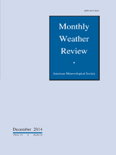
MONTHLY WEATHER REVIEW
Charting the Course of Weather ResearchMONTHLY WEATHER REVIEW, published by the American Meteorological Society, is a leading journal in the field of atmospheric science, recognized for its rigorous peer-reviewed articles that contribute significantly to the understanding of weather patterns and climate systems. With an impressive Q1 ranking in the 2023 category quartiles and a strong standing (#41 out of 148) in the Earth and Planetary Sciences Scopus rankings, the journal serves as an essential resource for researchers, professionals, and students alike. Although it does not currently offer open access, its comprehensive coverage of meteorological research spanning from 1960 to 2024 makes it invaluable for those seeking to stay at the forefront of developments in weather analysis and prediction. Situated in Boston, Massachusetts, this journal not only showcases pioneering research but also emphasizes the importance of collaborative efforts in the meteorological community, ultimately contributing to advancements in our understanding of atmospheric phenomena.

JOURNAL OF GEOPHYSICAL RESEARCH-ATMOSPHERES
Unraveling the complexities of Earth's atmospheric processes.JOURNAL OF GEOPHYSICAL RESEARCH-ATMOSPHERES, published by the American Geophysical Union, is a leading peer-reviewed journal dedicated to advancing our understanding of atmospheric science and related disciplines. With an impressive impact factor and consistently holding a Q1 ranking across key categories including Atmospheric Science and Geophysics, this esteemed journal caters to a global audience of researchers, professionals, and students eager to explore groundbreaking studies and insights. The journal covers a comprehensive scope of topics, from climate dynamics to atmospheric processes, enhancing knowledge and informing practices within the realm of Earth and Planetary Sciences. With its strong emphasis on quality research, it remains a vital resource for those engaged in unraveling the complexities of our planet’s atmosphere. Explore this journal to stay abreast of significant developments and foster a deeper understanding in this ever-evolving field.
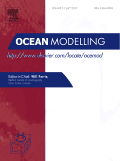
OCEAN MODELLING
Navigating the Depths of Ocean Science.OCEAN MODELLING, published by Elsevier Science Ltd, is a leading journal dedicated to advancing the understanding of ocean systems through innovative modeling techniques and interdisciplinary research. With an ISSN of 1463-5003 and E-ISSN 1463-5011, this journal is esteemed within the fields of Atmospheric Science, Computer Science (Miscellaneous), Geotechnical Engineering and Engineering Geology, and Oceanography, as reflected by its impressive quartile rankings in 2023, including Q1 in Oceanography and Q1 in Computer Science. Researchers and professionals benefit from the journal’s high-impact contributions, as indicated by Scopus rankings that place it among the top-tier publications in its categories. Although not an open-access journal, OCEAN MODELLING provides essential insights and methodologies crucial for both academic and practical applications, facilitating knowledge transfer and innovation among marine scientists, engineers, and policy-makers engaged in vital ecological studies and technological advancements regarding our oceans. Join the forefront of marine modeling research by contributing to and exploring the wealth of knowledge presented in OCEAN MODELLING.
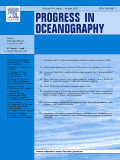
PROGRESS IN OCEANOGRAPHY
Innovating Ocean Research for a Sustainable FuturePROGRESS IN OCEANOGRAPHY is a pivotal journal published by PERGAMON-ELSEVIER SCIENCE LTD, dedicated to advancing the field of oceanographic research and exploration. With an ISSN of 0079-6611 and an E-ISSN of 1873-4472, this esteemed publication has been disseminating significant findings from 1963 and continues to be a cornerstone in aquatic sciences and geology, holding a distinguished Q1 ranking in both categories as of 2023. The journal primarily focuses on innovative research that contributes to our understanding of ocean processes, marine ecosystems, and the impact of human activities on the oceans. Its exclusive access model facilitates the dissemination of high-quality content that resonates with researchers, professionals, and students alike, ensuring that vital insights are accessible to the global scientific community. With a firm commitment to upholding rigorous scientific standards, PROGRESS IN OCEANOGRAPHY remains an influential platform for the communication of groundbreaking research, providing scholars with invaluable resources to drive future oceanographic studies.

Atmospheric Science Letters
Unlocking the secrets of the Earth's atmosphere.Atmospheric Science Letters, published by WILEY, is a leading open-access journal in the field of Atmospheric Science. Since its establishment in 2000, it has significantly contributed to advancing knowledge related to the Earth's atmosphere, focusing on both theoretical and practical aspects. With an impressive Q2 ranking in the Atmosphere Science category as of 2023 and a Scopus rank of 62 out of 148, this journal provides a platform for researchers and professionals to share their findings and insights. The journal’s commitment to open access since 2016 ensures that cutting-edge research is accessible to a global audience, fostering collaboration and innovation in the atmospheric sciences. Addressed from its headquarters at 111 River St, Hoboken, NJ, USA, Atmospheric Science Letters is pivotal for students, researchers, and professionals seeking to stay abreast of the latest developments in this dynamic field.

Earth and Space Science
Championing Open Access for Earth and Space Innovations.Earth and Space Science, published by the American Geophysical Union, is a distinguished open-access journal that has profoundly impacted the realms of earth and planetary sciences as well as environmental science since its inception in 2014. With impressive rankings, including Q1 in both Earth and Planetary Sciences and Environmental Science for 2023, this journal ranks 38th out of 195 in the general Earth and planetary sciences category and 51st out of 219 in environmental science, showcasing its commitment to high-quality research dissemination. The journal serves as a vital platform for researchers, professionals, and students, fostering the exploration of critical topics and advancements within these pivotal fields. With an accessible format, researchers can benefit from the rich content available, furthering their knowledge and ensuring that groundbreaking discoveries reach a broader audience. The journal's ongoing commitment to open access aligns with contemporary trends in scholarly communication, emphasizing inclusion and collaboration in tackling pressing global challenges.